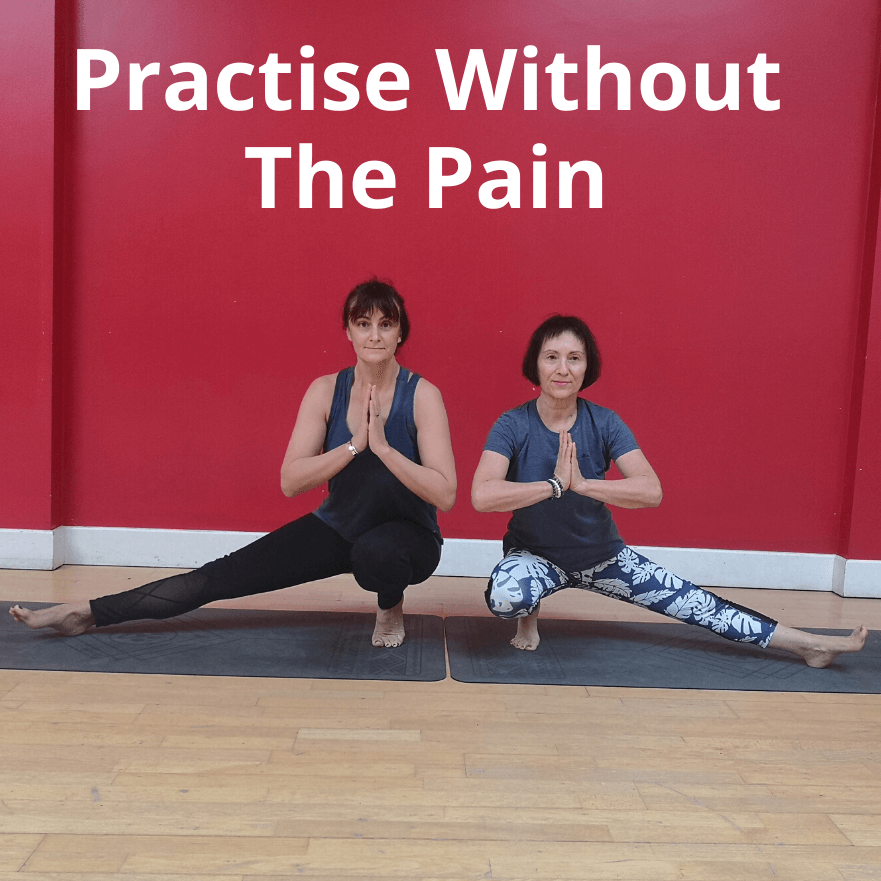
12th March 2020
I’ve known Annette Henn for years and have attended yoga classes with her up at William Penn Leisure Centre for the best part of two decades. Annette provides cover for my classes when I’m away and we have got together to create a joint workshop all about how to practice yoga safely – with particular attention to wrists and shoulders.
I asked Annette to write a post for me to introduce herself and her thinking behind the yogic concept of Ahimsa – which, amongst other things includes the concept of being kind to yourself.
Yoga practise without the pain
I first started attending yoga classes in the 70s, in a small hall in the beautiful village of Usk in South Wales. It was something new – and I loved it!
In those days, yoga was seen as something belonging to the New Age wave – a fad brought back from the hippy trail in India – Peace, Love and Meditation. Not really for the Jane Fonda ‘Go for the Burn’ generation.
Then, over the decades that followed, a change happened. Yoga teachers introduced more robust forms of yoga – Vinyasa Flow, Hot Yoga, Power Yoga and even HIIT yoga – with the result it has now become a recognised exercise workout up there with aerobics, step, running and all those cardio exercises.
And yes, it has become more and more competitive. There is even a World Championship Yoga.
Obviously, to progress sometimes we do need to push ourselves – “Let’s see if we can our heads a few centimetres closer to our knee in our forward fold?” “Can we get our fingers to the floor in Uttanasana (Camel)?”
But it is a fine line to walk …
AHIMSA is one of the Yamas, ethical considerations, written by Patanjali in his yoga sutras The 8 Limbs of Yoga around 2,500 years ago. It means the practice of Non-Violence. But this is not just non violence to others but also to yourself. And it translates very well into your yoga practice.
“Leave your ego off your mat” – a mantra that most of us in our yoga journey have heard.
Surrounded by others on the mat – you might feel pressure to ‘keep up’, to impress your fellow students, without considering whether the posture in question is helpful or not. The increase of injuries caused by yoga that physios have seen may indicate how, well, this yoga lark has got out of hand…
But then, stepping out of your comfort zone is how we grow.
Your practice should be about YOUR body and nobody else’s. We are often encouraged to ‘listen to our bodies’ – but if we are used to practicing in a particular way, whether full out power yoga, or gentle Hatha flow, it can be difficult to change our habits, even if our bodies are asking us to do so. We need to be able to take the right yoga practice for our bodies at the right time. Maybe we are used to a strong yoga practice, but our body really requires some yin yoga to restore its energy – or perhaps we like a softer practice, but require a burst of power yoga to boost our strength and energy.
Safe practice is the key. You can push yourself that little further, providing you DO ‘listen to your body’. Also there are ways to make your practice safer, so that you can push yourself without hurting your body.
Marie Page and myself are offering a Wrist and Shoulder-Friendly Workshop on 26th April that will explore how to do yoga safely without injuring these parts of the body that often have to take the brunt of our ego.
Hope to see you there!